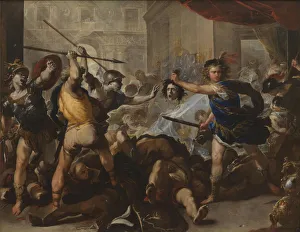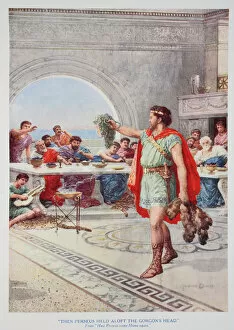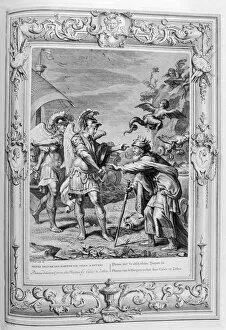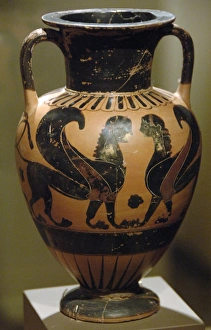Phineus Collection
"Phineus: A Mythological Tale of Transformation and Triumph" In the realm of ancient Greek mythology
All Professionally Made to Order for Quick Shipping
"Phineus: A Mythological Tale of Transformation and Triumph" In the realm of ancient Greek mythology, Phineus emerges as a central figure whose fate intertwines with that of Perseus. From being turned to stone by the mighty hero to his deliverance from the clutches of harpies, Phineus's story is one filled with extraordinary events and stunning artistic depictions. One such portrayal is Luca Giordano's masterpiece "Perseus turning Phineas and his Followers to Stone. " Created in the early 1680s, this artwork captures the pivotal moment when Perseus brandishes Medusa's head, transforming Phineus and his companions into immovable statues. The vivid colors in "Then Perseus held aloft the Gorgons head" further bring this scene to life through a captivating lithograph. The theme of transformation continues in "Phineas and Friends into Stone or Fineo ei suoi Compagni Transformati in Marmo, " found within Book V. This depiction showcases how art can immortalize mythical tales, allowing us to witness Phineus' petrification time and again. However, not all encounters for they can marred by misfortune. Michel de Marolles' engraving titled "Phineas is delivered from Harpies by Calais and Zethes" portrays a triumphant moment where two winged heroes rescue him from tormenting creatures. Bernard Picart also captures this event in his 1733 artwork, emphasizing both bravery and relief. The legend surrounding Phineus extends beyond visual arts; it permeates various forms like pottery. An amphora decorated with black figures representing Sphinx serves as an intriguing artifact connected to this mythological tale. Similarly, Sebastiano Ricci's painting "Perseus Confronting Phineas Head Medusa" delves into their epic confrontation within palace walls during Cephus' late 17th-early 18th century.

















